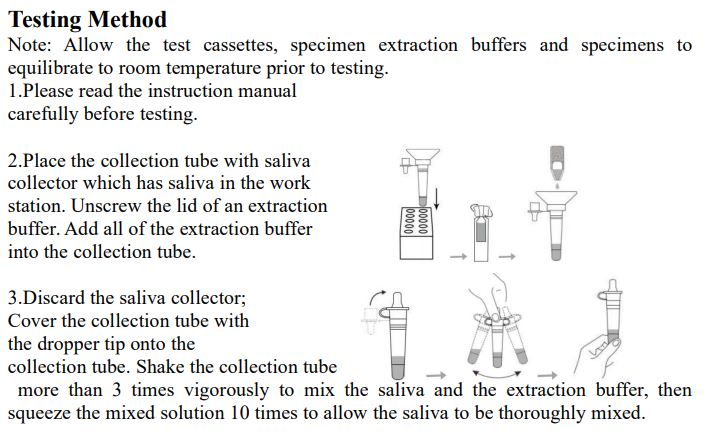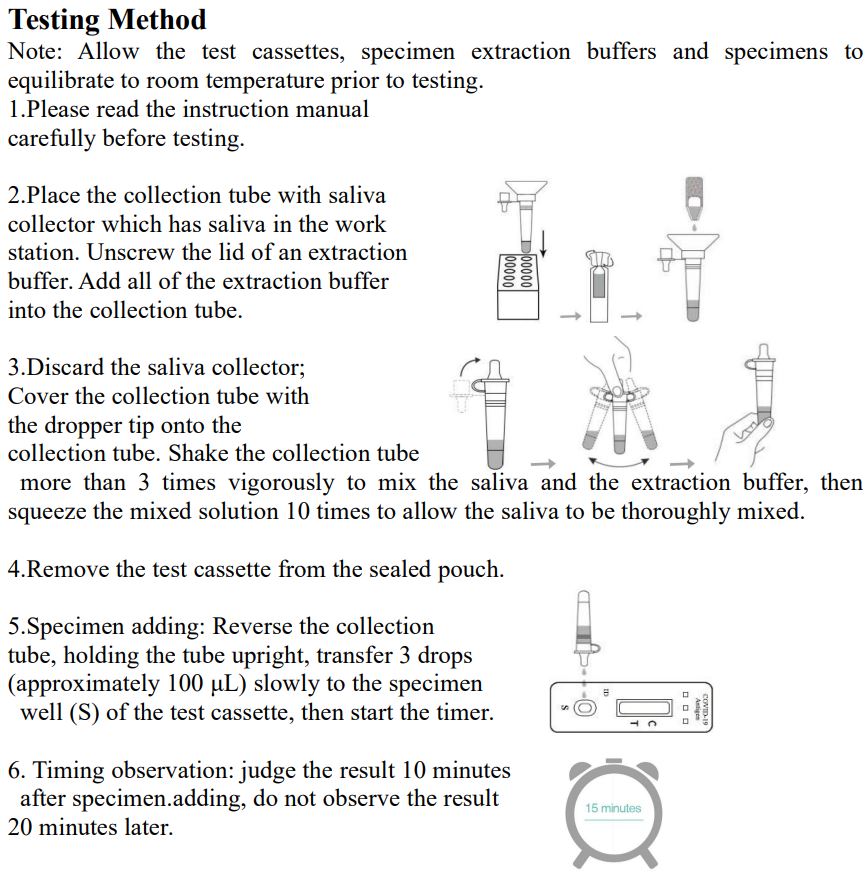Invbio Saliva Test 20 tests
Expected Usage
The INVBIO Cov Antigen Rapid Test Device (Saliva) is a polymer immunochromatographic technology and double antibody sandwich principle that is intended for the qualitative detection of the Nprotein antigen from SARS-CoV-2 in human saliva specimens directly. This N protein is present in the Omicron, Delta and all older former variants.

The Saliva cone is a very easy and non invasive method to test small children. Also it is easier for the tester to not come in contact with the saliva fluid. This is the easiest and fastest way of testing large amounts of people.

Testing is limited to laboratories, airports, medical institutions, events, schools and businesses.
Results are for the identification of N protein antigen. Antigen is generally detectable in upper respiratory specimens during the acute phase of transmission. Positive results indicate the presence of viral antigens.

- Positive results mean 7 days of quarantine for the tested person.
- Negative results should be treated as presumptive and confirmed with a molecular PCR assay if necessary.
- Negative results do not rule out C19 and should not be used as the sole basis for treatment or management decisions.
- Negative results should be considered in the context of a person’s recent exposures, history and the presence of other signs.
The INVBIO COVID-19 Antigen Rapid Test Kit is intended for use by a tester to also test asymptomatic infected people that also can be an infectious source. Based on the current investigation, the incubation period is 1 to 14 days, mostly 3 to 7 days.
The main manifestations of omicron include fever, fatigue and dry cough. Nasal congestion, runny nose, sore throat, myalgia and diarrhea are found in a few cases.
The polymer immunochromatographic technology and double antibody sandwich principle were used to detect the novel c2 antigen in human saliva specimens with the principle of capture method. During the test, a specimen solution is added to the sample well of the kit. The specimen is first mixed with the colored polymer-labeled c2 monoclonal antibody 1 on the release pad, and then chromatographed on a nitrocellulose membrane. If the specimen contains c2 antigens, these antigens will first bind to colored polymer-labeled c2 monoclonal antibody 1, so that when the mixture is chromatographed on a nitrocellulose membrane, it will be immobilized with the c2 monoclonal antibody 2. The detection line (T line) was captured to form a colored polymer-labeled c2 monoclonal antibody1-antigen- c2 monoclonal antibody 2 immune complex. Therefore, a red line appeared on the T line, which was a positive result.
If no viral antigen is present in the specimens of the subject, a red line will not be formed on the test line (T line), which is a negative result. The quality control line (C line) on the test cassette is coated with goat anti-mouse antibody. Under normal circumstances,a red line should appear on the quality control line(C line) during the test to prove that the test cassette is working properly.